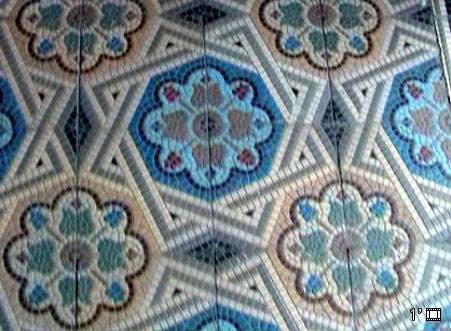The day started off with comics. A friend sent me an electronic version of the Tintin comic King Ottokar’s Sceptre which was first published in 1947. The story concerns a fictive Balkan state with the name of Syldavia which is bordered by another, Borduria. Syldavia is a monarchy with a crest consisting of a black pelican. The monarch is subject to the requirements of an ancient custom and loses the right to rule if he does not appear annually, on St. Vladimir’s Day, carrying a historic sceptre.
The narrative begins in London with a professor who is about to make a study visit to the country to examine royal seals. This necessitates his entry into the same well-guarded archive in which the sceptre is stored. Tintin gets enmeshed in a Syldavian plot relating to this and, in the process, various assassination attempts are made on his life by heavily-moustachioed men in London and in Syldavia itself. The conspiracy to overthrow the king proves to include members from all echelons including the police. It fails, of course, but the outlines of Balkanism are there – from peasants in exotically colourful costume to bomb-throwing republicans who are made to look more like anarchists and a thoroughly engaging gentlemanly monarch…
We visit the synagogue which was completed in 1911 and was designed by Viennese architect Friedrich Grünanger. This places it in the same category as the National Theatre, built by the Viennese architects Helmer and Felmer and finished in 1907 and is another connection to Austria. Round at the side of the building—which used to seat around 1200 people and seems to have very good acoustics—there is an exhibition dedicated to the history of the Jews in Bulgaria during World War II. It is a story that we had not heard before and I suspect it is surprisingly little known, at least at the other end of Europe where I come from. It is seldom used as an example… We’ll have to research it and see if I can’t find some history books in English, second-hand if necessary in order to confirm what we think is being narrated in the exhibition. |
|

I find all this important because there are some simple indicators—that of course reveal our own interests as artists—which orient us in a country we don’t know. How the majority of the country interacts with its minorities immediately reveals some of the outlines of national identity and the levels of political friction—or their absence—at the interfaces, show areas of political leverage open to being instrumentalised, mythicised, reinterpreted or countered. All currents in a contested territory. On the other hand, our own media-propagated preconceptions also require investigation. And then what people discard or sell second hand, for example—including books—presents a lesson in where the country has been, where it’s headed and, in the esoteric eddies of cultural currency, a sort of social archaeology. |